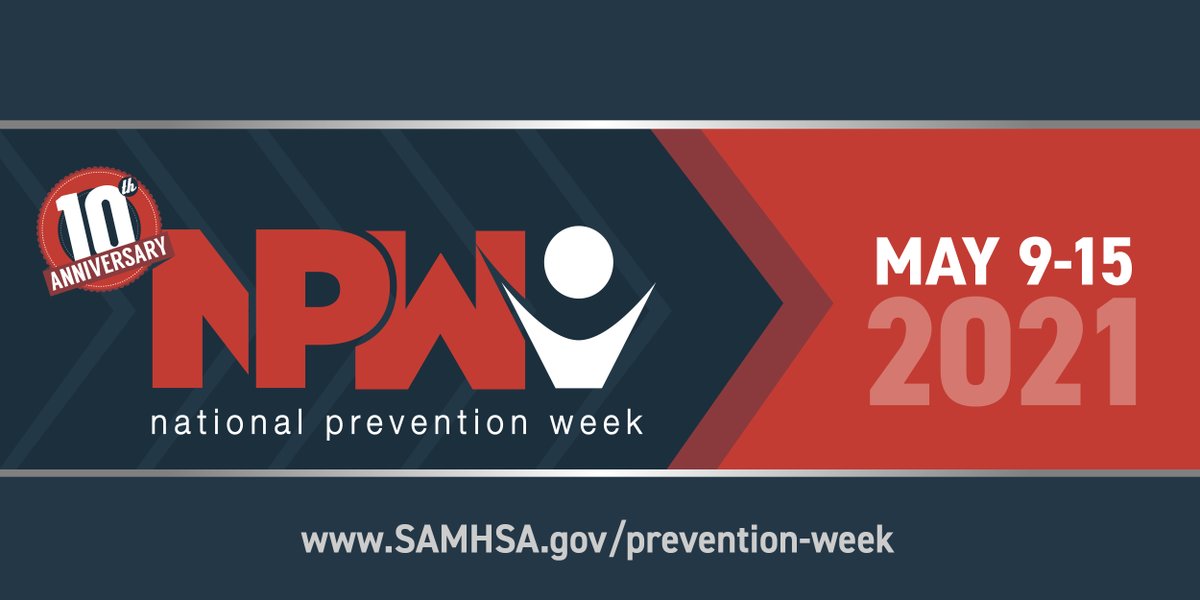Event Description
- May 14 – 10am -11:30am
- Location: Teams
Join Microsoft Teams Meeting
+1 984-204-1487 United States, Raleigh (Toll)
Conference ID: 877 741 307#
Event Description
The Olmstead Plan Stakeholder Advisory (OPSA) Committee on Older Adults, chaired by former member of the NC House of Representatives and former NCDHHS Secretary Lanier Cansler, is pleased to present national expert on person-centeredness and gerontologist Leigh Ann Creaney Kingsbury, MPA for her second presentation on Olmstead Plan development. The online presentation regarding older adults with disabilities in the Olmstead context occurs on Friday, May 14 from 10:00 to 11:30 AM.
- May 14 – 10am -11:30am
- Location: Teams
Join Microsoft Teams Meeting
+1 984-204-1487 United States, Raleigh (Toll)
Conference ID: 877 741 307#
Event Description
• Description: The sole purpose of this one-hour meeting will be to
An Assessment of the North Carolina Department of Health and Human Services’ System of Services and Supports for Individuals with Disabilities
The sole purpose of this one-hour meeting will be to receive feedback from OPSA and the public on the TAC’s report,
An Assessment of the North Carolina Department of Health and Human Services’ System of Services and Supports for Individuals with Disabilities. The TAC’s Sherry Lerch will present the report on May 12 at the quarterly OPSA meeting. The report will post on the DHHS Olmstead website the day before, May 11.
• Location: Zoom.gov
https://www.zoomgov.com/j/1606454271?pwd=Mm1OdHJkNGxuNzlJOW9kMUsreWVFdz09
Meeting ID: 160 645 4271
Passcode: OPSA
One tap mobile
+16692545252,,1606454271#,,,,*409840# US (San Jose)
+16468287666,,1606454271#,,,,*409840# US (New York)
Dial by your location
+1 669 254 5252 US (San Jose)
+1 646 828 7666 US (New York)
+1 669 216 1590 US (San Jose)
+1 551 285 1373 US
Meeting ID: 160 645 4271
Passcode: 409840
Find your local number: https://www.zoomgov.com/u/aqsDXp5ir
Event Description
o Description: This important meeting will feature the first public presentation by the Technical Assistance Collaborative (TAC) on its analysis for the NC Department of Health and Human Services (NCDHHS) of Olmstead-related programs and policies. The TAC’s report on statewide programs, LME/MCOs and provider networks will drive the development of NCDHHS’ Olmstead Plan, along with ongoing input from the OPSA.
o Location: Zoom.gov
https://www.zoomgov.com/j/1619087034?pwd=WHJpMHFuQmFINGI4b2phMWtkbnRHQT09
Meeting ID: 161 908 7034
Passcode: Olmstead
One tap mobile
+16692545252,,1619087034#,,,,*47255096# US (San Jose)
+16468287666,,1619087034#,,,,*47255096# US (New York)
Dial by your location
+1 669 254 5252 US (San Jose)
+1 646 828 7666 US (New York)
+1 551 285 1373 US
+1 669 216 1590 US (San Jose)
Meeting ID: 161 908 7034
Passcode: 47255096
Find your local number: https://www.zoomgov.com/u/ad5s6pzyJs
o If you’d like access via captioning, join this link:
https://www.captionedtext.com/client/event.aspx?EventID=4781459&Customer...
o Meeting Agenda
Event Description
o Description: This important meeting will feature the first public presentation by the Technical Assistance Collaborative (TAC) on its analysis for the NC Department of Health and Human Services (NCDHHS) of Olmstead-related programs and policies. The TAC’s report on statewide programs, LME/MCOs and provider networks will drive the development of NCDHHS’ Olmstead Plan, along with ongoing input from the OPSA.
o Location: Zoom.gov
https://www.zoomgov.com/j/1619087034?pwd=WHJpMHFuQmFINGI4b2phMWtkbnRHQT09
Meeting ID: 161 908 7034
Passcode: Olmstead
One tap mobile
+16692545252,,1619087034#,,,,*47255096# US (San Jose)
+16468287666,,1619087034#,,,,*47255096# US (New York)
Dial by your location
+1 669 254 5252 US (San Jose)
+1 646 828 7666 US (New York)
+1 551 285 1373 US
+1 669 216 1590 US (San Jose)
Meeting ID: 161 908 7034
Passcode: 47255096
Find your local number: https://www.zoomgov.com/u/ad5s6pzyJs
o If you’d like access via captioning, join this link:
https://www.captionedtext.com/client/event.aspx?EventID=4781459&Customer...
o Meeting Agenda
As cannabis becomes more available and socially accepted in the U.S., it is increasingly important to facilitate research on this drug’s effects. A major hindrance, however, has been the lack of a standard unit by which to measure cannabis intake and compare its effects across studies. Existing experimental data are often hard to interpret due to the wide variability in potency of cannabis plant material and extracts, the lack of standard measures of use, and the wide variety of ways people consume cannabis. To help rectify this, NIDA, along with the National Cancer Institute; the National Heart, Lung, and Blood Institute; and the National Institute of Mental Health, have published a notice in the NIH Guide directing researchers funded by these institutes to measure and report their findings from clinical research on cannabis using a standard unit of delta-9-tetrahydrocannabinol (THC) of 5 milligrams.
A standard unit is not a limit, nor any kind of recommendation for consumption that would apply to consumers or to dispensaries; it is simply a unit of measure to help facilitate cannabis research. Similar standard measures have also been applied for other substances. Researchers use morphine milligram equivalents to compare effects of opioids having widely varying potencies. And research on alcohol and tobacco has been facilitated by defining a standard drink (.6 fl oz or 14 grams of pure alcohol) and a cigarette, respectively.
Cannabis is a complex plant with many constituents that might influence its effects; however, research has established that THC is the main chemical responsible for the high that users seek as well as for some of the medicinal effects that have been demonstrated in clinical trials. Like other drugs, THC’s effects vary based on the route of administration and the tolerance of the user, among other factors. Having a standard unit of measurement will make it easier to compare the influence of these factors on how individuals respond to the drug.
A standard unit does not place a limit on how much THC researchers can use in experiments—they can use multiples (or fractions) of the unit. But adoption of a standard unit for measuring and reporting purposes will facilitate data interpretation and will make it possible to design experiments on drug effects that have real-world relevance, as well as make it easier to translate that research into policy and clinical practice.
Utilizing a THC standard unit in cannabis research will help us gain a better understanding of the effects of cumulative THC exposure, such as the effects of prenatal and/or adolescent exposure on brain development, cognition, and educational attainment. It will also facilitate understanding THC’s adverse medical effects seen in frequent users such as hyperemesis or cardiovascular toxicity, as well as effects like psychosis seen in individuals with certain underlying vulnerabilities. In research on treatment of cannabis use disorder, a standard unit will enable researchers to more accurately capture reduction in use as an outcome measure, the same way researchers now capture clinically meaningful reductions in alcohol consumption via heavy drinking days, defined as four or more drinks per day for women, and five or more for men. In the cancer setting, the use of a THC standard unit will aid research investigating molecular mechanisms of cannabis effects on tumor growth, invasion, metastasis, as well as clinical research to determine benefits and risks of cannabis use for a variety of cancer treatments side-effects such as nausea and vomiting, pain management, neuropathy, anxiety, insomnia, and loss of appetite.
A few years of information-gathering and deliberation have gone into NIDA’s decision to establish a 5-milligram standard unit of THC. The Cannabis Policy Research Workgroup established in 2017 by the National Advisory Council on Drug Abuse issued a report in 2018 recommending that NIDA explore establishing a standardized THC unit to help researchers analyze cannabis use and to help those who use cannabis understand their consumption of this drug. In October 2019, researchers Tom P. Freeman (University of Bath, UK) and Valentina Lorenzetti (Australian Catholic University) proposed adopting 5 milligrams as the THC standard unit in an article in the journal Addiction. In March 2020, NIDA issued a request for information (RFI) from the research community, interested stakeholders, and the general public asking for input on the proposed establishment of a standard unit for cannabis research.
The responses reflected a diversity of opinions, but overall, there was support for the idea. Some suggested that a larger amount of 10 milligrams would be more relevant for people who use cannabis frequently or who use today’s high-potency products. But extensive discussion with experts in the field showed wider support for Freeman and Lorenzetti’s original recommendation of 5 milligrams. This dose may produce a high in both experienced and occasional users, but in most studies, has not produced adverse effects; and in some states, 5 milligrams is already the standard serving size in edible products that contain THC (others use 10 mg).
The 5-milligram standard unit will only apply to THC, not to other psychoactive constituents of the cannabis plant such as cannabidiol (CBD). Our hope is that adopting this 5-milligram standard will enable a clearer understanding of the effects of THC by researchers as well as the wider public.
Also see - FAQs Regarding Notice of Information: Establishment of a Standard THC Unit To Be Used in Research

By Dona Dmitrovic, Director, Center for Substance Abuse Prevention
The global coronavirus pandemic has forced us to learn new ways of doing many things. Employees in some job sectors learned to work from home, while others had to find entirely new sources of income. Parents learned to be teachers for their kids, while teachers themselves learned to do their jobs in less-than-ideal remote environments. We figured out how to use technology to celebrate birthday parties, host award shows, and even conduct a presidential inauguration.
One thing we can do to benefit ourselves as a nation is talking with friends, family, and neighbors about underage drinking and adult problem drinking prevention.
According to the 2019 National Survey on Drug Use and Health, 54.3 percent (or 18.3 million) people ages 18 to 25 and 55 percent (or 119.1 million) people ages 26 or older drank alcohol in the past month. Alcohol misuse stays under the radar in our society, especially when it comes to the alcohol use of adults. After all, it’s a legal substance for those over age 21 and so many American adults drink socially and responsibly. Others, however, develop alcohol use disorders, and it can be difficult to determine how and whether to intervene.
SAMHSA’s Center for Substance Abuse Prevention (CSAP) has resources to help facilitate these conversations.
Many of our key initiatives—such as Communities Talk to Prevent Underage Drinking and “Talk. They Hear You.”—are focused on keeping alcohol out of the hands of children and young adults. This is an important age group because alcohol use patterns that start early can last a lifetime. Early initiation of drinking is associated with development of an alcohol use disorder later in life.
But we know that the problem of alcohol misuse goes well beyond this age group. In the era of COVID-19, we’ve seen increases in alcohol use that appear to be linked with pandemic-related stress. Among adults ages 18 and older, 13.3 percent (1 in 10) reported that they started or increased substance use to cope with stress or emotions related to COVID-19. Of course, the pandemic is just one among many factors that is likely contributing to these increases.
According to findings in December 2020 by the Drug Abuse Warning Network (DAWN)—a nationwide public health surveillance system administered by SAMHSA’s Center for Behavioral Health Statistics and Quality—96 percent of reported alcohol-related emergency department (ED) visits between January and August that were due to only alcohol misuse involved those 21 years old or older. Interestingly, alcohol was the most common substance involved in substance-related ED visits (45.1 percent).
The realities indicated by the data are troubling and they demand action. SAMHSA and its partners and the thousands of prevention professionals across the country are committed to making a difference across the populations who misuse alcohol.
We know that while prevention often begins with a conversation, it must go even further. It involves the choices we make for ourselves, in support of those closest to us and our entire communities. It involves looking at the science and the evidence to develop and implement prevention activities in which everyone can a play role. And while the energy may be a little different if such activities take place virtually, there is a lot we can achieve by expanding the universe of ways we “live” prevention.
We’ve learned how to keep substance misuse prevention—including underage drinking prevention—alive and well despite social distancing guidelines. The prevention of problem drinking among all adults calls for the same level of innovation and tenacity.
National Prevention Week (NPW)—which is celebrating its 10th anniversary this year—gives us an opportunity to promote collective strategies that work in communities. And when reflecting on the NPW activities over the last 10 years, I’m reminded that prevention is for everyone.
With today’s NPW focus on preventing underage drinking and alcohol misuse, it’s a good time to reinforce all the ways we can move prevention forward across age groups.
If you or someone you know is experiencing alcohol misuse, no matter their age, I encourage you to connect with the National Drug and Alcohol Treatment Referral Routing Service, available at 1-800-662-HELP (4357). This service is confidential and free to use.
We know the risk factors. We know the symptoms. And we know the serious and potentially life-altering consequences of alcohol misuse. We should be quick to openly address the realities associated with problem drinking among adults by speaking up when someone we know may be misusing alcohol, encouraging candid conversations about the issue and implementing adult-focused prevention strategies in our communities.

This was originally published in a recent National Association of Social Workers’ Alcohol, Tobacco and other Drug specialty section newsletter. It summarizes our addiction professions in the pandemic series.

Mike Massey has been facilitating SMART Recovery Online (SROL) meetings since 2013. His professional experience as a former teacher and union leader, as well as his personal experience with substance use, gave him the skills and abilities to help meeting participants. When many of the participants said they also were dealing with a mental health disorder, he struggled with how best to help them and decided there needed to be a reference guide for facilitators on how to handle this aspect of recovery. So, he and several others created one: Facilitator Best Practices for Addressing Mental Health Disorders and Suicide in SMART Recovery Meetings.
In this podcast, Mike talks about:
- What led to writing the Facilitator Best Practices for Addressing Mental Health Disorders and Suicide in SMART Recovery Meetings
- Most facilitators are not experts or professional therapists, but should have a familiarity with mental health disorders
- People coming to the meeting for hope and inspiration
- Reframing the terms of mental health
- Two types of stigma – self and society
- Searching for patterns and reasons for addictions
- Asking participants, “What do you need to get through this?”
- The mystery and magic of being in a meeting
- Doing a better job of helping others help themselves
- How to handle the mention of suicide
- Contributors in writing the guide, including the QPR Institute
- Finding the guide on VolunteerHQ
Additional resources:
Click here to find all of SMART Recovery’s podcasts
PLEASE NOTE BEFORE YOU COMMENT:
SMART Recovery welcomes comments on our blog posts—we enjoy hearing from you! In the interest of maintaining a respectful and safe community atmosphere, we ask that you adhere to the following guidelines when making or responding to others’ comments, regardless of your point of view. Thank you.
- Be kind in tone and intent.
- Be respectful in how you respond to opinions that are different than your own.
- Be brief and limit your comment to a maximum of 500 words.
- Be careful not to mention specific drug names.
- Be succinct in your descriptions, graphic details are not necessary.
- Be focused on the content of the blog post itself.
If you are interested in addiction recovery support, we encourage you to visit the SMART Recovery website.
IMPORTANT NOTE:
If you or someone you love is in great distress and considering self-harm, please call 911 for immediate help, or reach out to The National Suicide Prevention Hotline @ 800-273-8255, https://suicidepreventionlifeline.org/
We look forward to you joining the conversation!
*SMART Recovery reserves the right to not publish comments we consider outside our guidelines.*
Subscribe To Our Blog
Join our mailing list to receive the latest news and updates from the SMART Recovery Blog.
You have Successfully Subscribed!
